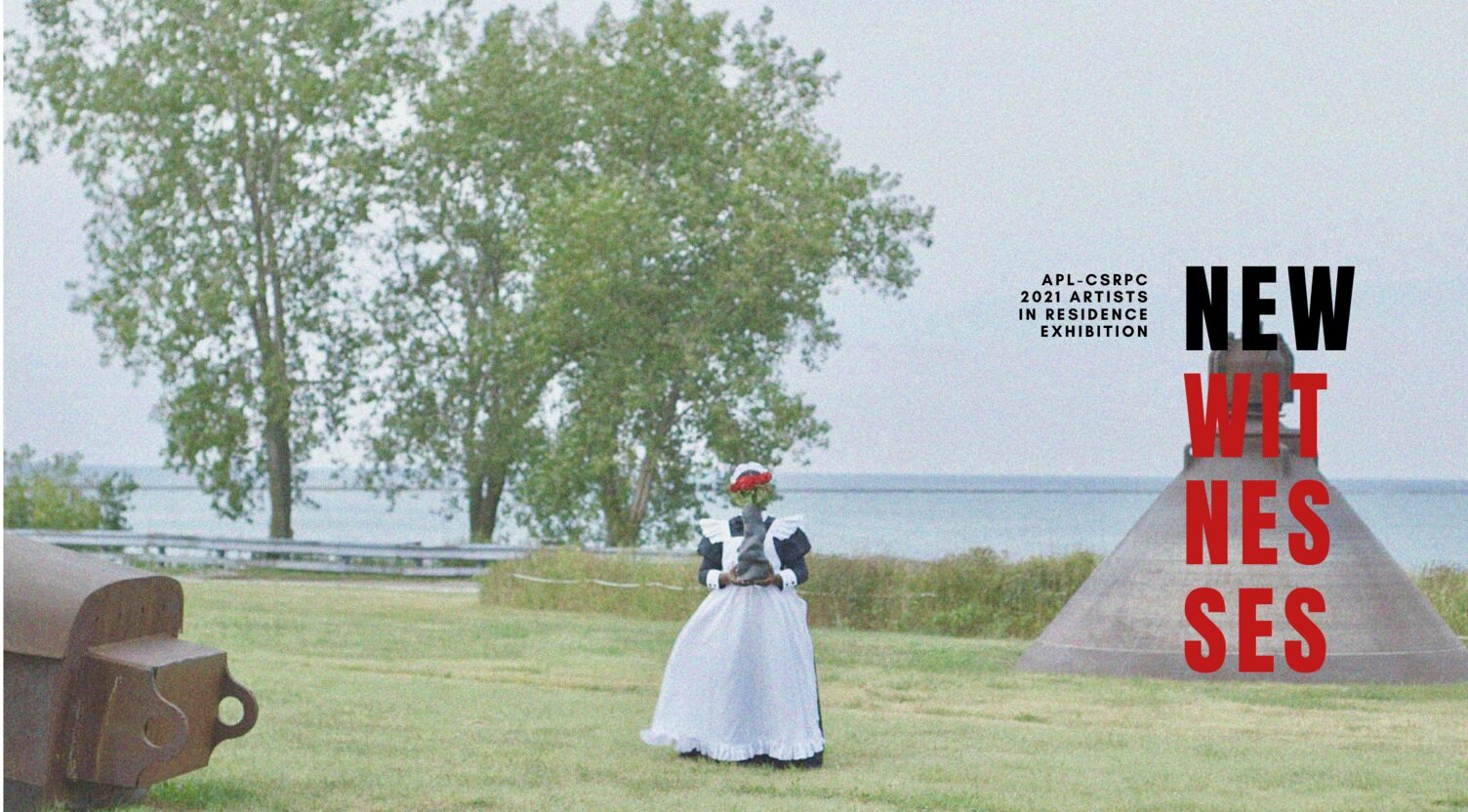
OCT 9 - NOV 20, 2021
NEW WITNESSES, featuring works by zakkiyyah najeebah dumas-o'neal + A.J. McClenon + Lola Ogbara, 2021 Arts + Public Life (APL) and Center for the Study of Race, Politics, and Culture (CSRPC) Artists-in-Residence
Sign up for Arts + Public Life’s newsletter and follow us on Facebook and Instagram
Join us on Saturday, October 9th for a special first viewing during our Back on the Block Open House! No reservations are required for this open day, which will run from 1:00 - 5:00pm.
45-minute reserved viewing slots for groups up to (15) on Wednesdays, Fridays, and Saturdays from 3:00 - 7:00pm CT starting October 13 through November 20, 2021.

“Every moment happens twice: inside and outside, and they are two different histories.”
Zadie Smith, from White Teeth
New Witnesses asks the viewer to consider a more manifold approach to history, where time happens within us, as well as around us. Our bodies, our interiority, and the endless spheres outside of ourselves all mark this passage differently. For McClenon, Ogbara, and o’neal, there is power in these interior histories, and in the body, to not just traverse time but to warp it, reject it, and, at times quite surprisingly, hold space for tenderness within it. This kind of time travel explores what it is to see, to be seen, to be marked in time, or to refuse to be seen at all.
New Witnesses is the culminating exhibition of the 2021 cohort of the Arts + Public Life (APL) and the Center for the Study of Race, Politics, and Culture (CSRPC) Artists in Residence program. These works were produced during a ten-month residency, while navigating the continuing restrictions and pressures of the ongoing pandemic.
zakkiyyah najeebah dumas o’neal (Sample image) photo courtesy of the artist
The Artists
-
zakkiyyah najeebah dumas o’neal
zakkiyyah najeebah dumas o’neal’s practice lingers in spaces of interiority, love, private selfhood, reconciliation, joy, and belonging. Over the span of this ten month residency, o’neal has been re-writing by hand a short story by Lorraine Hansberry that was published in 1957: The Anticipation of Eve. This mark-making practice loops o’neal through time not just to Hansberry herself, but the alter-ego she seems to create in her lesbian short stories, and resonates within an intimate pantheon of Black queer figures. In these works, the alter ego is not just a way to relieve a heavy heart of internal conflict, but a means to transcend beyond marginality and into a place of elsewhere, or even to tenderness.
-
A.J. McClenon
A.J. McClenon offers a selection of multimedia works pulled from an in-progress short story and film collection: VEGA. VEGA is presented as a dystopian future. Set in the year 2112, 63 years after the “Post-Post-Post Movement,” a global government is executing its Universal Relocation Project (URP), and leaving Earth in a large machine fast enough to orbit a black hole. Three leading Black physicists work undercover with the Futurist Freedom Party (FFP) to help those left behind by securing technology for life to survive in Earth's deep oceans.
-
Lola Ayisha Ogbara
Lola Ayisha Ogbara’s series The Perfect Servant continues the artist’s exploration of destruction as renewal in response to drudgery. Commemorating Black laborers of the Industrial Era who’ve made the great city of Chicago what it is, Ogbara uses Chicago’s labor intensive history to envision a radical future for Black lives. Immortalizing maids and domestic workers who are often forgotten in narratives surrounding Chicago’s history, Ogbara revisits the far Southside as “The Ghost of Pullman’s Past”. Ogbara finds an additional dialogue between sculpture and experimental photography that challenges our relationship to viewership. Ogbara questions, “What lengths are we willing to go to in order to protect what is rightfully ours?” as she begins to imagine a collective disruption in the way we use our bodies to perform artistic labor.

